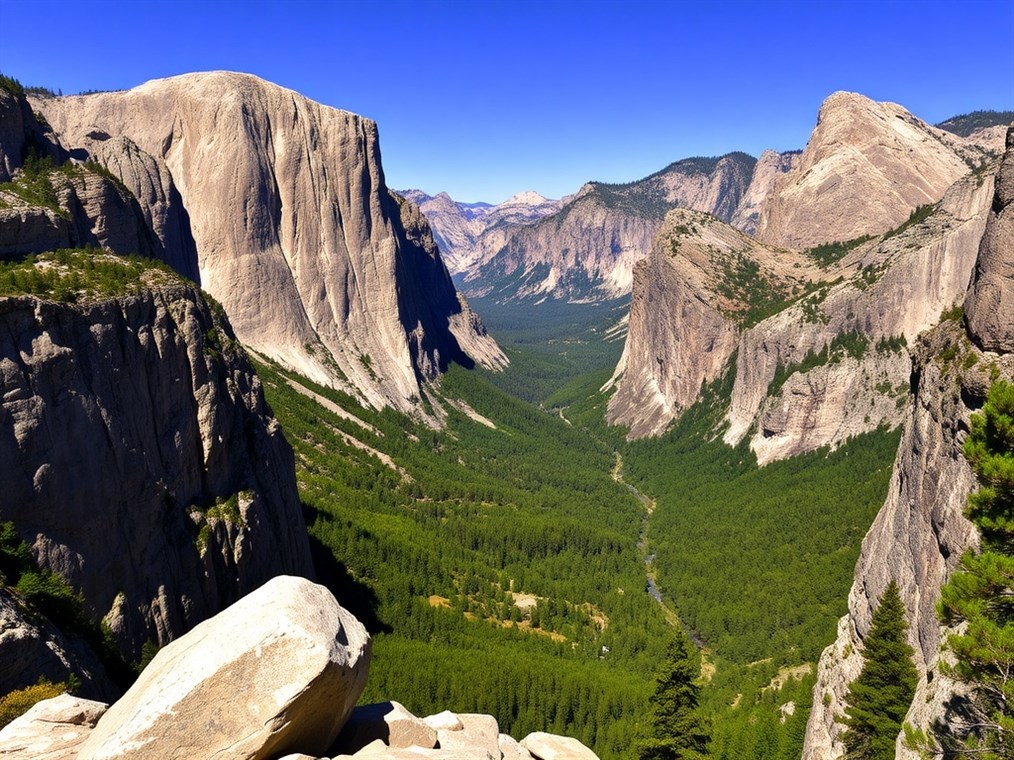
Yosemite’s Cliffs: A Love-Hate Relationship with Rockfalls
FactsYosemite’s Cliffs: A Love-Hate Relationship with Rockfalls
Yosemite. Just the name conjures images of towering granite cliffs, those postcard-perfect vistas that take your breath away. But here’s a little secret: those majestic cliffs are always on the move, shedding rocks in a constant, dramatic dance. We’re talking rockfalls, folks. And while they’re part of what makes Yosemite so raw and powerful, they also mean we need to be smart about safety.
So, how often do these rockfalls actually happen? Well, on average, Yosemite sees around 80 of them every year. That’s more than one a week! Of course, plenty of smaller ones probably go unnoticed, so the real number could be even higher. Think about it: over the last century and a half, Yosemite has seen over a thousand of these events. It’s just part of the park’s story.
Now, what exactly do we mean by a “large” rockfall? It’s not always about size, though some are truly massive. Picture this: in March 2009, a chunk of Ahwiyah Point near Half Dome – we’re talking roughly 45,300 cubic meters, or 134,000 tons – came crashing down. That’s like a small skyscraper collapsing! It was the biggest rockfall Yosemite Valley had seen in 22 years, and it shook the ground like a mini-earthquake.
What’s behind all this rock shedding? A whole bunch of geological factors are at play. First off, remember those glaciers that carved Yosemite Valley? They left behind super-steep cliffs that are just naturally prone to instability. Then you’ve got weathering, where water seeps into cracks, slowly but surely weakening the rock. And don’t forget about those bedrock fractures, those natural cracks that let huge slabs of rock peel away over time. It’s like the granite is slowly exfoliating, shedding its skin.
But it’s not just long-term processes. Sometimes, there’s a trigger. Water freezing in cracks is a big one – that “frost wedging” can really pry rocks loose. Earthquakes, even small ones, can shake things up, literally. Tree roots can also wedge their way into cracks, widening them over time. And even just the daily changes in temperature can stress the rock. The crazy thing is, more than half the time, there’s no obvious trigger at all! It just… happens.
Where do these rockfalls happen? Pretty much anywhere there’s a cliff. But those super-steep, glacier-carved areas are definitely hotspots.
So, what’s being done to keep people safe? The National Park Service is all over it. They’ve got scientists and researchers using fancy tech like laser mapping to study rockfalls. They use computer models to figure out which areas are most at risk. And they use that information to make smart decisions, like moving buildings, closing trails, or doing whatever it takes to minimize the danger.
If you ever happen to witness a rockfall (and hopefully you won’t!), here’s the drill: If you’re on the valley floor, hightail it away from the cliff towards the center of the valley. If you’re near the base of a cliff, duck behind the biggest boulder you can find. And once the rocks stop falling, get away from that cliff as quickly as possible.
Look, rockfalls are just part of the deal in Yosemite. They’re a reminder that nature is powerful and always changing. But by staying informed, paying attention to your surroundings, and following the park’s guidelines, you can enjoy the incredible beauty of Yosemite without taking unnecessary risks. It’s a place worth experiencing, just remember to keep a watchful eye on those magnificent, but sometimes temperamental, cliffs.
You may also like
Disclaimer
Categories
- Climate & Climate Zones
- Data & Analysis
- Earth Science
- Energy & Resources
- Facts
- General Knowledge & Education
- Geology & Landform
- Hiking & Activities
- Historical Aspects
- Human Impact
- Modeling & Prediction
- Natural Environments
- Outdoor Gear
- Polar & Ice Regions
- Regional Specifics
- Review
- Safety & Hazards
- Software & Programming
- Space & Navigation
- Storage
- Water Bodies
- Weather & Forecasts
- Wildlife & Biology
New Posts
- Diving Deep into Tangerine: More Than Just a Sunny Locale
- Jamaica Backpack Daypack Pockets Shopping – Review
- TEOYETTSF Climbing Backpack Multifunction Military – Buying Guide
- The Curious Case of Cavendish’s Classroom: Where Did This Science Star Study?
- Dragon Backpack Insulated Shoulder Daypack – Buying Guide
- ROCKY Hi-Wire Western Boots: A Rugged Review After a Month on the Ranch
- Vertical Curbs: More Than Just Concrete Barriers
- Regatta Modern Mens Amble Boots – Honest Review
- YMGSCC Microfiber Leather Sandals: Beach to Boardwalk, Did They Hold Up?
- Tangier: More Than Just a Backdrop in “Tangerine”
- DJUETRUI Water Shoes: Dive In or Doggy Paddle? A Hands-On Review
- Barefoot Yellow Pattern Hiking 12women – Is It Worth Buying?
- Koa Trees: How Fast Do These Hawaiian Giants Really Grow?
- DDTKLSNV Bucket Hat: Is This Packable Sun Shield Worth the Hype?